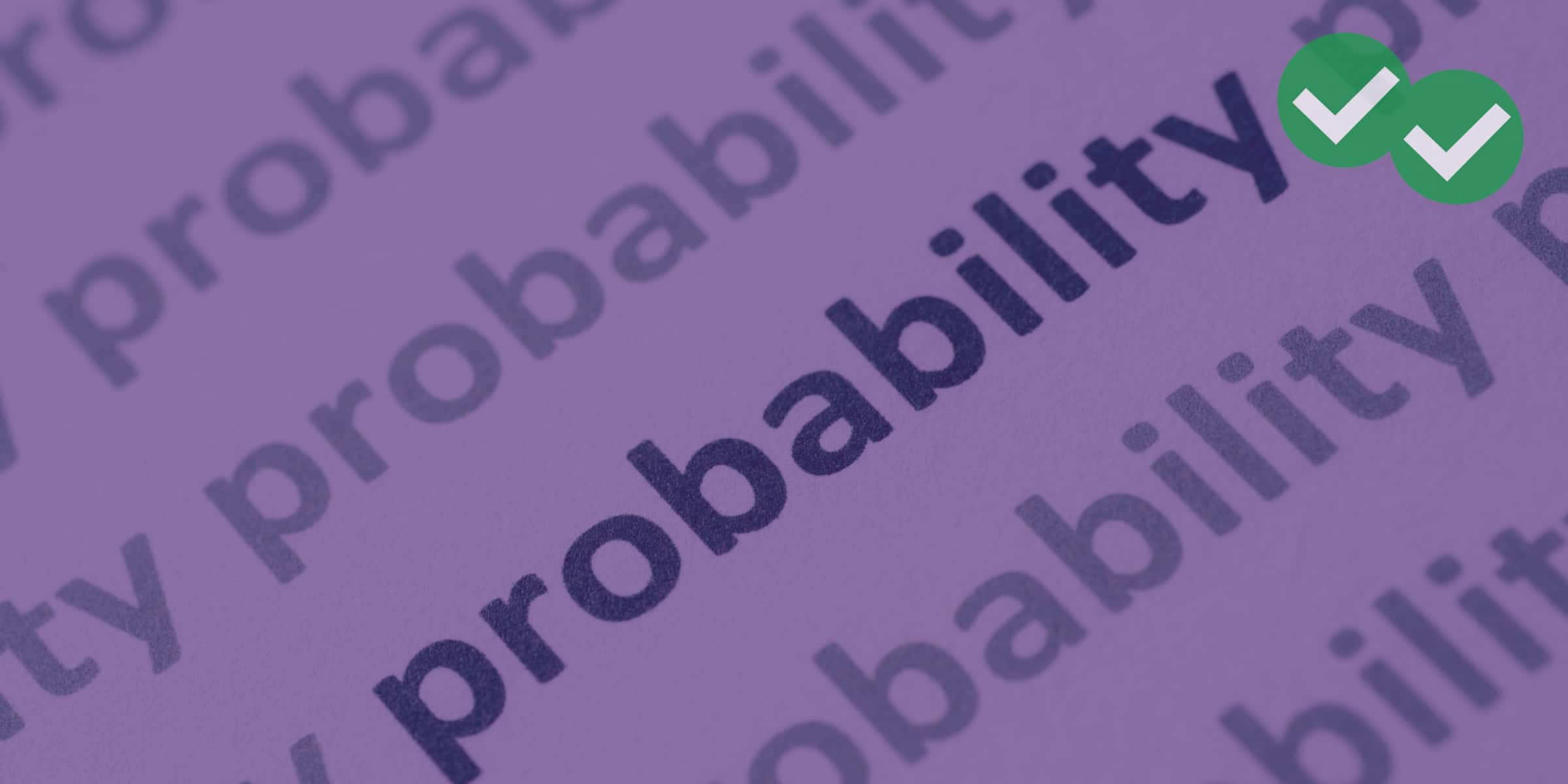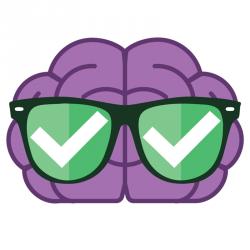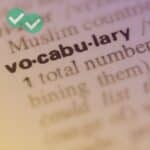
Probability questions in the GRE are both intriguing and challenging–testing your ability to analyze uncertain events and make informed decisions based on statistical principles. While there won’t be many Probability questions on the GRE, we have some strategies to help you enhance your problem-solving skills and get a competitive GRE score!
Understanding probability questions
Probability questions test your ability to calculate the likelihood of events happening. You’ll come across scenarios where you have to figure out the probability of drawing specific items, choosing members from a group, or predicting outcomes based on given conditions.
Example question:
From a group of 5 managers (Joon, Kendra, Lee, Marnie and Noomi), 2 people are randomly selected to attend a conference in Las Vegas. What is the probability that Marnie and Noomi are both selected?
(A) 0.1
(B) 0.2
(C) 0.25
(D) 0.4
(E) 0.6
Key concepts to master
Basic probability concepts
To get started, let’s dive into fundamental probability concepts, such as:
- Sample spaces: These are all the possible outcomes of an experiment or event.
- Outcomes: Refers to the specific results or occurrences that can happen within a given sample space.
- Events: These are subsets of the sample space, representing specific combinations of outcomes.
- “Favorable” outcomes: These are the desired or successful outcomes that align with a particular event.
Understanding these concepts lays a solid foundation for exploring the fascinating world of probability.
Probability formulas
Familiarize yourself with essential probability formulas, such as the probability of an event: P(A) = [# of outcomes where A occurs]/[total # of outcomes]. If we use this formula to solve the example question above, we can reach the following solution:
P(Marnie and Noomi are both selected)= [# of outcomes where they are both selected]/[total # of outcomes]
To find the denominator in our question, let’s figure out how many outcomes there are when we choose 2 people from a group of 5. Since the order of the selected people doesn’t matter, we can use the combination formula. So, we have 5C2 ways to select 2 people from 5. And guess what? When we crunch the numbers, we get 5C2 = 10!
At this point, we need to determine the number of outcomes where Marnie and Noomi are both selected. In other words, in how many ways can we select 2 people such that both of those people are Marnie and Noomi? Well, there’s only 1 way to do this; select both Marnie and Noomi.
So, P(M and N both selected)= 1/10
Probability distributions
Understanding probability distributions is crucial to mastering GRE probability questions. Probability distributions describe the likelihood of occurrence of different outcomes in an experiment. In the context of GRE probability questions, understanding distributions can help you predict the probabilities of different outcomes given a set of conditions.
There are two main types of probability distributions to know for the GRE: discrete and continuous. Discrete distributions are used when the set of possible outcomes is discrete. For example, the number of heads when flipping three coins is a discrete distribution. Continuous distributions, on the other hand, apply to scenarios where the outcomes can take on any value within a certain range. For example, the time it takes for a student to complete a test is a continuous distribution, as it could be any non-negative real number.
When dealing with probability distributions on the GRE, the key is to understand the conditions of the problem and apply the correct type of distribution. Being able to identify the type of distribution needed for a specific problem will streamline your approach and increase your efficiency.
Conditional probability
Conditional probability is a fundamental concept you’ll need to understand to solve complex GRE probability questions. It refers to the probability of an event occurring, given that another event has already occurred. In other words, it is the measure of the probability of an event considering the effect of a previous event. This concept can change the entire probability landscape, as knowing one event has occurred may change the likelihood of a subsequent event.
The formula for conditional probability is P(A|B) = P(A ∩ B) / P(B), where P(A|B) is the probability of event A happening given that event B has happened, P(A ∩ B) is the probability of both events A and B occurring, and P(B) is the probability of event B occurring.
Let’s apply this to a GRE-style question. Imagine you have a deck of 52 cards (26 red and 26 black), and you have already drawn one black card without replacing it. Now, what is the probability that a second card drawn is also black? To solve this, you would calculate the initial probability of drawing a black card (26 black cards / 52 total cards = 0.5 or 50%). However, since you’ve already drawn one black card and not replaced it, there are now 51 total cards and 25 black cards left. So, the conditional probability of drawing a second black card is now 25/51. This problem illustrates how conditional probability works and why it’s essential to consider in GRE probability questions.
Successfully mastering conditional probability can enable you to tackle a broader range of probability questions on the GRE effectively and with confidence. It’s a tricky concept at first, but with practice, you’ll become adept at maneuvering through problems that involve dependencies between events.
Probability Rules
Understanding probability rules is crucial for efficiently solving GRE probability problems. These rules govern how probabilities function and interact, providing you with a logical framework for tackling complex probability questions.
- The Addition Rule: This rule is used when you want to find the probability of either of two events happening. The addition rule states that P(A ∪ B) = P(A) + P(B) – P(A ∩ B). This accounts for the fact that the two probabilities P(A) and P(B) might have some overlap, meaning the event A and B could occur simultaneously.
- The Multiplication Rule: This rule applies when you want to determine the probability of two events happening together. According to the multiplication rule, P(A ∩ B) = P(A) * P(B), given the events A and B are independent. If A and B are dependent, then we use conditional probability, which leads us to P(A ∩ B) = P(A) * P(B|A), where P(B|A) is the conditional probability of B given A.
- The Complement Rule: This rule is used when it is easier to calculate the probability of an event not happening and subtracting it from 1 rather than calculating the probability of the event happening. In mathematical terms, P(A’) = 1 – P(A), where A’ is the complement of A.
- The Total Probability Rule: This rule is used when our desired event can occur in multiple ways, and those ways form a complete, exclusive set of possibilities. Mathematically, P(A) = Σ P(A ∩ Bi), where Bi are the different exclusive ways that A could occur.
By understanding and applying these probability rules, you can systematically and logically approach any GRE probability problem, enhancing your chances of accurately solving even the most complex questions.
Ace it with these strategies
Visualize: Draw diagrams, make tables, or create charts to help understand the problem better. For example, when dealing with multiple probability events, sketching out a tree diagram can help you visualize the different pathways and outcomes.
Break it down: Simplify complex scenarios into smaller parts. Solve each bit, then bring it all together. For instance, if faced with a multi-step probability question involving multiple dice rolls, solve for the probability of each roll’s outcome step by step.
Real-world practice: Apply these concepts to real-life scenarios. It’ll make the theory feel less abstract. For example, consider a scenario where you’re calculating the probability of choosing a specific card from a deck during a card game with friends.
Use Venn diagrams: These are great for visualizing relationships between different sets and calculating overlapping probabilities. These diagrams can be particularly helpful in scenarios such as the probability of selecting balls of different colors from different bags.
Combinations and permutations: Learn these well. They pop up a lot in probability questions. Understand the distinction between them and practice solving problems involving arranging and selecting objects, like choosing a committee from a pool of candidates with specific roles.
Understand the context: Analyze the context of the events you’re dealing with. Determine if they are mutually exclusive, independent, or dependent. This assessment guides you toward selecting the appropriate probability formula for accurate calculations.
Check for hidden info: Read the question carefully. Sometimes, there are hints or restrictions that can affect your answer. For example, your question is: “You’re drawing two cards from a standard deck without replacement. What’s the probability of drawing a red card followed by a black card?” The “without replacement” rule means the composition of the deck changes after the first draw.
Practice, practice, practice: Just like any other skill, practice is absolutely crucial! Dive into GRE practice materials and put extra emphasis on probability questions. Regular practice will not only sharpen your problem-solving abilities but also boost your confidence and familiarize you with the wide range of scenarios you’ll encounter in the GRE.
GRE’s probability questions are a great way to show off your analytical thinking and math skills. By understanding the basic concepts, mastering the key formulas, and using effective strategies, you’re all set to crush these questions on test day. Keep practicing and soon you’ll be acing this section, earning a GRE score that truly reflects your mathematical genius.






Leave a Reply